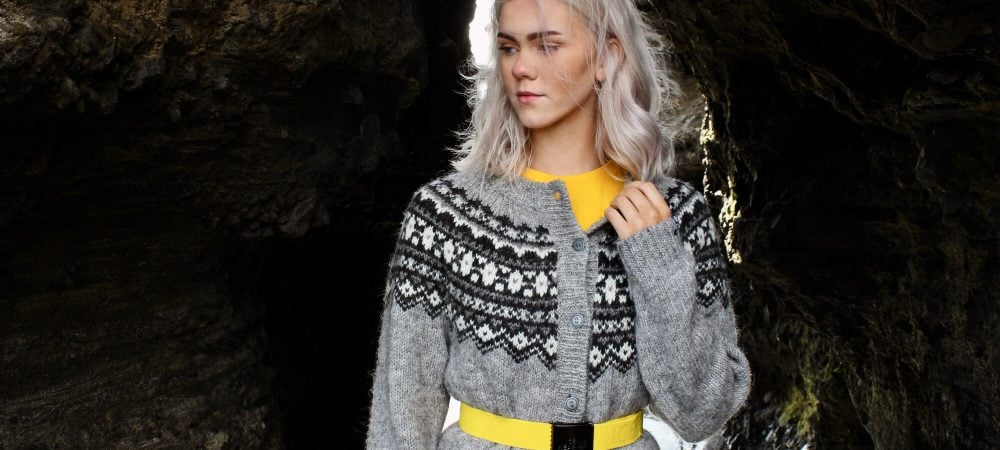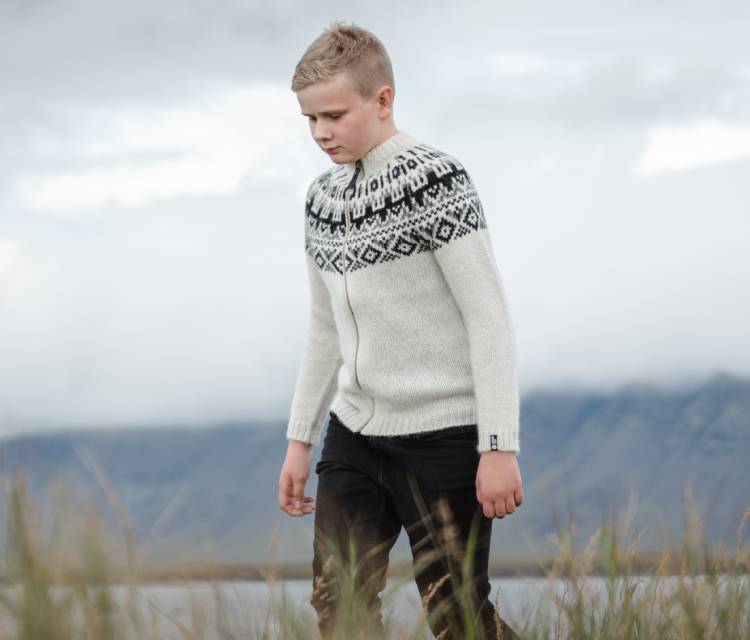Knitting and wool production have been staples of the Icelandic economy and way of life for centuries, but the sweater we now know as the Icelandic wool sweater, known in Iceland as the lopapeysa, is a more recent addition to the country’s cultural expression. While Icelandic wool is the product of sheep who survived and bred for centuries in spite of extreme elements, Icelandic people have thrived through resilience in the face of challenging conditions. Both the wool and the process of turning it into clothing are central to the modern national identity of Iceland.
It is worth noting that the iconic wool sweater came on the scene not long after Iceland declared its independence from Denmark. The time was right for people to adopt some symbol or token of national identity. Knitting patterns emerged in Scandinavia for a drop-shouldered round-yoked woollen sweater, inspired by traditional Greenland dress but dubbed by some as “Icelandic sweaters.” It was not a big leap for Icelandic people to take up their needles and adopt the beautiful design and functional garment as its own.
Newly independent and still establishing its identity as a nation, Iceland became involved in a dispute with England over fishing rights and the extent of Iceland’s territorial waters. These so-called Cod Wars lasted from the 1950s to the 1970s. During this period, the Icelandic wool sweater became a means by which Icelandic people could embody their sense of a national identity. Serving a functional purpose to the fishermen who needed clothes that could keep them warm and dry, the visually distinctive lopapeysa defined them as Icelandic.
Associating Iceland with Culture and Crafts
With the turn of the millennium and the emergence of globalization as a new not topic, Icelanders became more interested in defining and expressing a national identity. The economy boomed and the lopapeysa enjoyed a revival in popularity as artists and designers explored ideas like cultural heritage and folk traditions.
Then in 2008, the sudden trauma of the banking system collapse introduced a period of financial difficulties for Iceland. By liquidating the banks rather than bailing them out, then imposing new stricter laws, Iceland was able to rebuild its economic strength. During this period of uncertainty, knitting became a means by which citizens were able to practice self-sufficiency in the face of economic crisis. But more than that, during this difficult period of social unrest and financial uncertainty, many people took to knitting in public as a form of political expression. Protesters would knit during public marches and sit-ins. Knitting was a form of peaceful protest, and the calming act of knitting became a means of personal soothing during difficult times. By engaging in the age-old handcraft, people feel a connection to their country’s history and heritage of self-sufficiency and industriousness.







